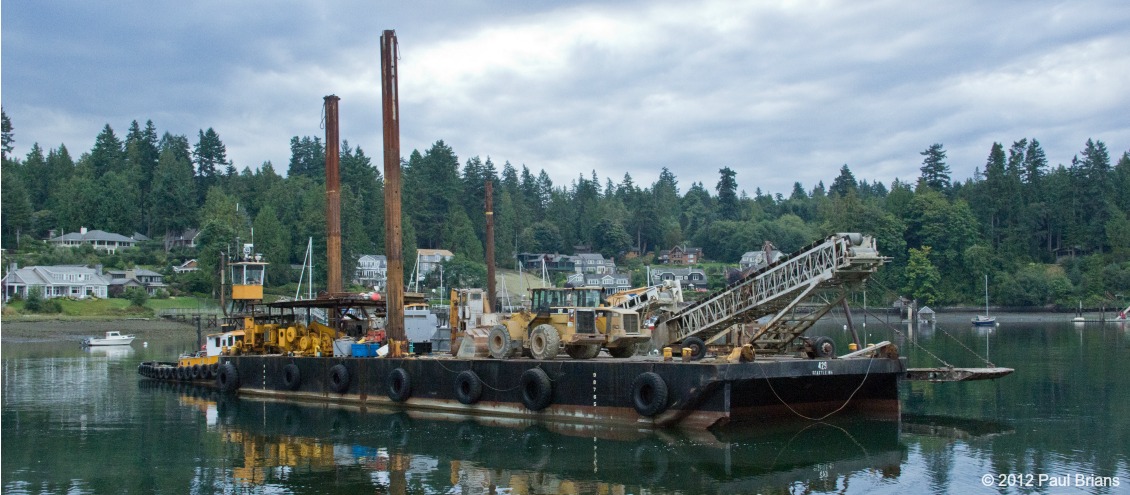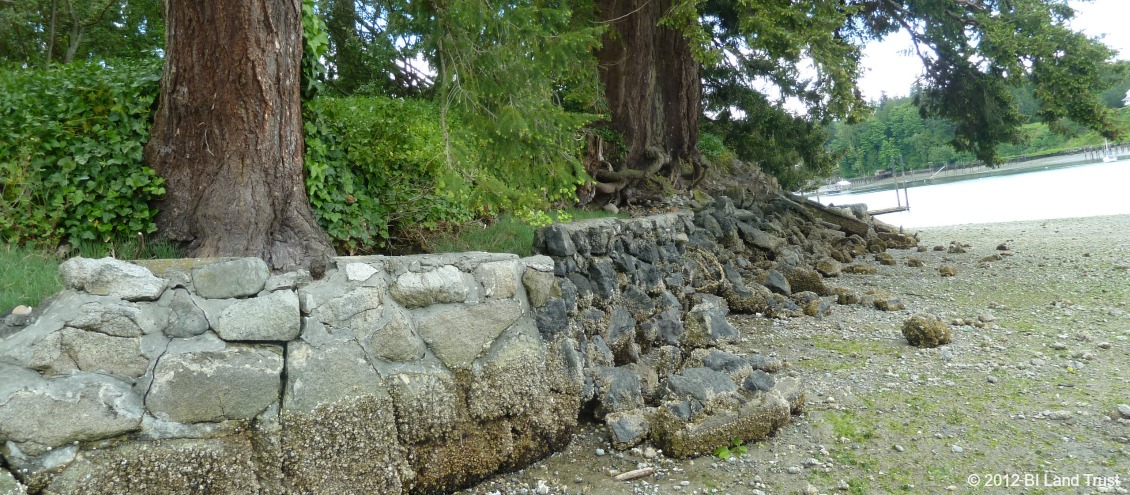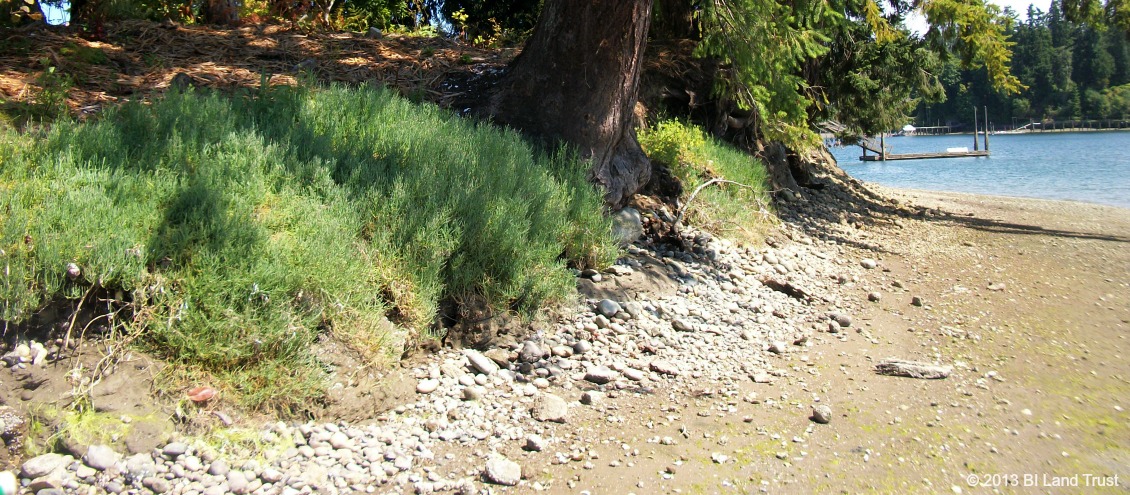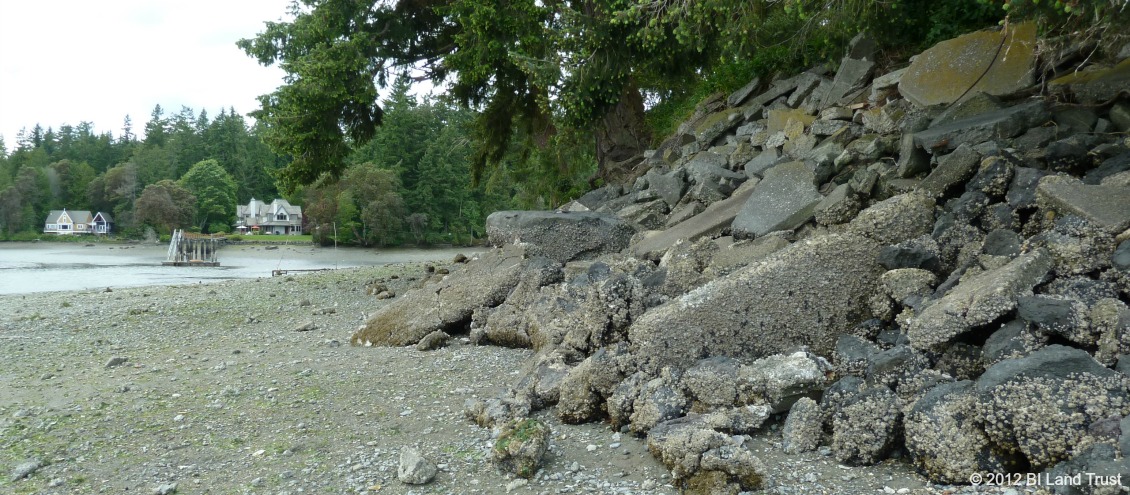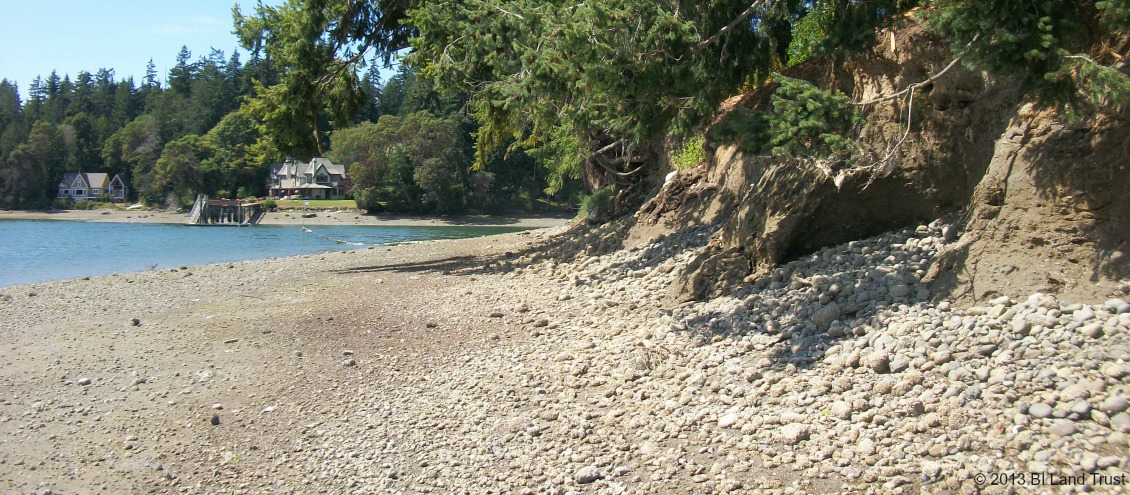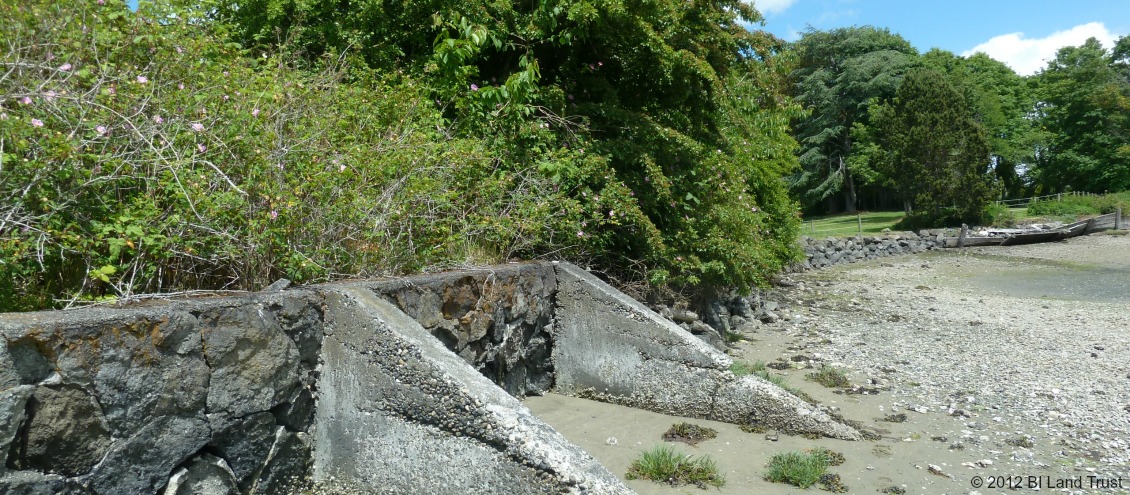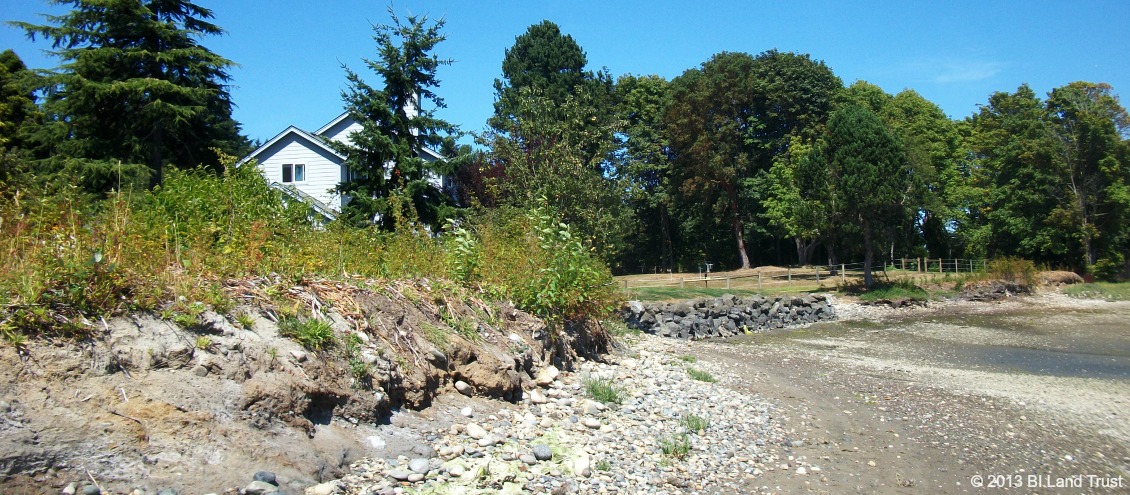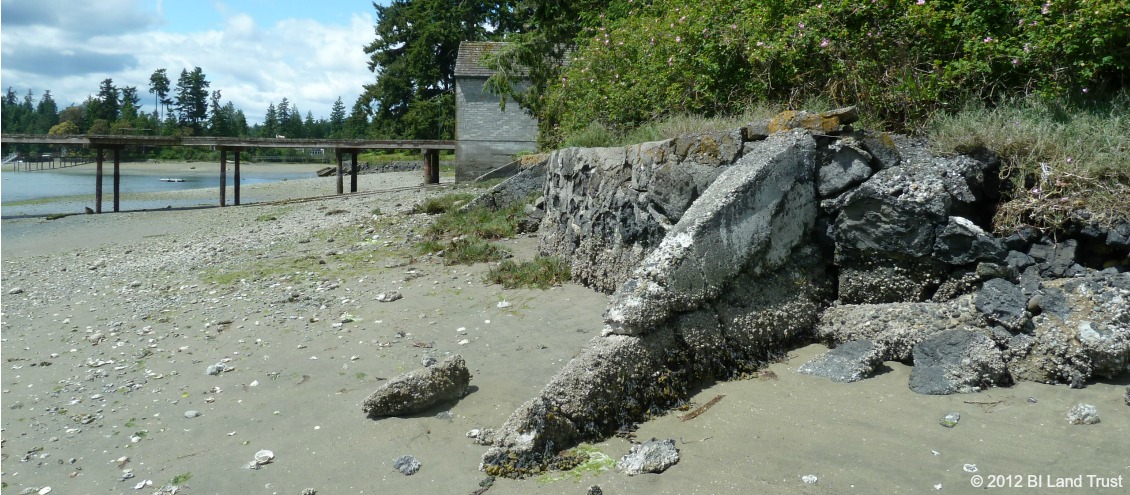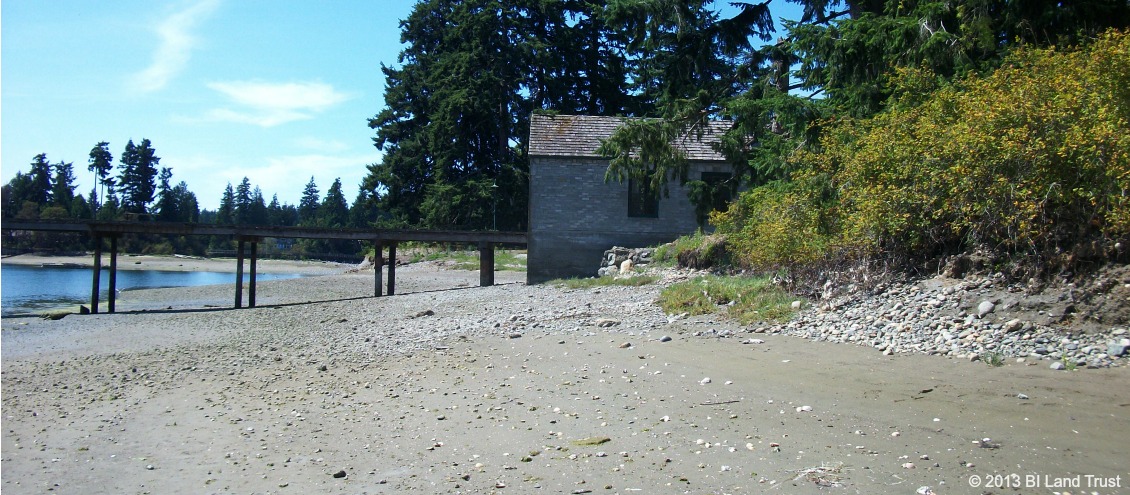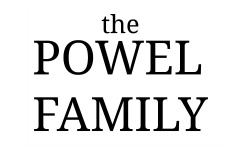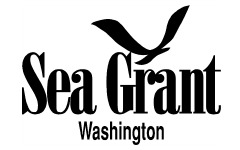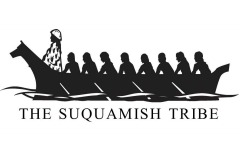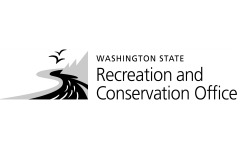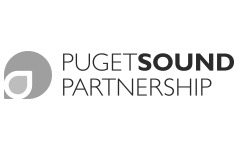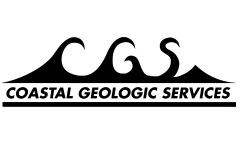The Powels have lived on their 11.2 acre Port Madison property since 1954 and have had a Bainbridge Island Land Trust conservation easement on their property since 1993, which protects their property in perpetuity. The property is surrounded by approximately ¼-mile of marine shoreline. With the exception of one small shoreline segment, the entire shoreline was armored with a variety of structures, including rock rip rap revetments, creosote timber walls, rock and mortar walls, concrete walls, and concrete debris. Much of the armor was aged and in a state of disrepair.
As stewards of their property, the Powel Family was looking for ways to enhance the property for wildlife and asked the Bainbridge Island Land Trust for assistance. Thus, the restoration project was created. The Powels were involved in all aspects of the project and continue to care for the restoration area.
As the largest shoreline restoration project on private property in Puget Sound, the Powel Shoreline Restoration is both a showcase and outreach project – an opportunity to illustrate and educate others about how shoreline restoration on private property is possible – balancing ecological restoration goals with the needs of the landowner. And the efforts are protected forever.
Project Goal
To restore the shoreline to a more natural condition by removing shore armor and creating a more natural riparian area to benefit juvenile salmon and other species in a manner compatible with residential use of the property.
The Project is:
• A collaboration between multiple stakeholders and a team with experience in education, collaboration, shoreline ecology, fisheries, permitting, geology, cultural resources, engineering, and more
• A private/public partnership with funding and support from the family, the Land Trust, and state and federal salmon recovery grants
• About monitoring the success of shoreline restoration so lessons can be learned
• A community project with over 1,200 volunteer hours involved in all aspects of the project to date
Results and Goals of Project
• By removing 1/3 mile and 1340 tons of rip rap/concrete/creosoted bulkhead and non native plants, the project is allowing the shore and the sea to naturally reconnect – restoring shoreline processes, structure, and functions to the maximum extent practicable
• By removing almost an acre of invasive and non-native plants along the shore and uplands and planting over 2,500 native plants, there is a more complex plant and tree riparian habitat for insects, birds, and to provide shade along the shore (important for fish!)
• The project hopes to increase the healthy inter-tidal area by 163%. Salt marsh vegetation was enhanced by providing more inter-tidal area after removal of bulkheads
• By engaging stakeholders (e.g., family/landowners, City, State, and Federal agencies, Native American Tribes, Bainbridge Island Land Trust, neighbors and other interested parties) over 1,000 people have visited the property, more than 900 have visited the project website and the project has been highlighted in the media regionally and recognized for its success
Project Timeline
• Phase I, 2009-2011: Secure grant funds, create a stakeholder group, research contractors. With input from all stakeholders, a design for bulkhead removal and riparian restoration was created.
• Phase II, 2012-2016: Secure more grant funds and matching funds. Remove shore armor (bulkheads) and non-native/invasive vegetation from riparian area Our incredible team from JTC Inc and Sound Bulkhead worked from barges and carefully on the shore. Sound Native Plants then planted over 2,500 native trees and plants along the riparian area of the property. A heavy mulch layer was applied around the planting area to help reduce the likelihood of invasive plants coming back and to help the new plants retain moisture. Aggressive weed control and watering remains part of the project – provided by our contractors, volunteers and the landowners – to ensure our goal of 80% plant survival.
• Phase III – ongoing: Maintenance and Monitoring: To determine if the actions followed the plan and were responding as anticipated. Included physical and biotic changes. This phase is ongoing with the assistance of Kitsap Beach Watchers, Washington Sea Grant, and WSU Cooperative Extension, led by Jeff Adams.
Objectives and Relevance
• The objective of the project is to restore lost salt marsh, inter-tidal habitats, and marine riparian habitat typically associated with shoreline armoring. Shallow inter-tidal habitat and salt marsh habitat is important to forage fish and juvenile Chinook salmon (an ESA listed species) through all their life stages, along with other marine species. A key problem with bulkheads is habitat loss and degradation in the marine environment, resulting from anthropogenic modification.
• A natural shoreline is a more resilient shoreline – and it is aesthetically pleasing. Removing bulkheads and increasing natural vegetation reduces maintenance costs over time, and provides ecological benefits. An improved riparian area helps filter contaminants, provides shade, food and nutrients to the marine system, and stabilizes the bank.
• This was the first major restoration project undertaken by the Land Trust and serves as a shining example of the important role the Land Trust plays in the recovery of salmon and the Puget Sound marine ecosystem and working with private landowners to improve habitats of all kinds on conservation properties.
• The project serves as an important example to other shoreline property owners, as well as for restoration practitioners and educators.
Why Remove Bulkheads?
Bulkheads have been used as a defense to reduce shoreline erosion, but they are limited in their function and cause inherent harm to nearshore marine ecosystems. Adverse effects include:
• Loss of inter-tidal area
• Loss of shoreline vegetation
• Loss/disruption of sediment input and transport
Importance of removing bulkheads
• Increases opportunity for sediment input (bank/bluff erosion is a natural process, which creates beaches.
• Increases inter-tidal area for juvenile salmon that use the space for migration, feeding, refuge, and physiological transition – adapting to saltwater after moving out of their natal streams. Out-migration is a time of high stress and natural mortality – shoreline modifications increase these stressors.
• Increases area for re-establishment of salt marsh
• Improves riparian conditions – important for filtering contaminants that run off the land; provides shade to inter-tidal areas; provides food and other nutrients to marine systems; helps stabilize banks and bluffs, preventing erosion; provides wildlife habitat
• Helps provide spawning habitat for inter-tidal-spawning forage fishes (e.g., surf smelt and sand lance), which are critically important prey in the marine food web.
• Natural shorelines are more resilient, productive, and aesthetically pleasing
Project Funding
Design Phase: $127,000*.
Implementation Phase: ~ $337,000*.
Monitoring: Yet to be funded, all in-kind donations to date.
To replace the bulkhead would cost ~ $300 per foot, plus the cost of debris removal, for a total approximate cost of $512,000. At this site, restoration is not only less expensive but provides increased ecological values and benefits.
*Funding for this project was provided by the Puget Sound Acquisition and Restoration Fund through the Washington Salmon Recovery Funding Board, the Powel family, and the Bainbridge Island Land Trust. The Land Trust, as project grant applicant and sponsor, has been able to leverage a number of low or no cost services that exceed grant match requirements.
Partners and Funding
THE POWEL FAMILY has resided on the project site for nearly 59 years and donated a perpetual conservation easement held by the Bainbridge Island Land Trust to protect property conservation values. The family voluntarily and actively participated in project scoping, design and implementation phases, provided funding, and amended the conservation easement to more fully protect shoreline resources.
BAINBRIDGE ISLAND LAND TRUST is a non-profit organization that obtained project grant funds, acted as project sponsor and manager, facilitated contracting, communications/public outreach, landowner agreements, matching funds and services.
WASHINGTON SEA GRANT provided project management, science and technical expertise, education, monitoring and publication assistance.
SUQUAMISH TRIBE participated in monitoring, provided fisheries expertise, and assisted with technical and cultural resource project elements.
WASHINGTON DEPARTMENT OF FISH AND WILDLIFE provided technical and permitting assistance.
U.S. ARMY CORP OF ENGINEERS provided permitting assistance.
WESTSOUND WATERSHEDS COUNCIL, PUGET SOUND PARTNERSHIP, WASHINGTON RECREATION AND CONSERVATION OFFICE provided technical review, project consultation, publicity, and funding.
CITY OF BAINBRIDGE ISLAND provided nearshore assessment data and permitting assistance.
COASTAL GEOLOGIC SERVICES provided engineering design, implementation and monitoring services.
PORT MADISON BAY NEIGHBORS helped with adjacent neighbor design buy off and project support.
JTC INC. AND SOUND ROCK performed bulkhead and debris removal.
SOUND NATIVE PLANTS performed invasive plant removal and native plant installation and monitoring.
CULTURAL RESOURCES CONSULTANTS performed pre-construction site assessment & construction monitoring.
DUKES CONSTRUCTION installed a fish screen in salt water environment.
AND MORE… including Beach Watchers and volunteers working on site in a number of capacities.

